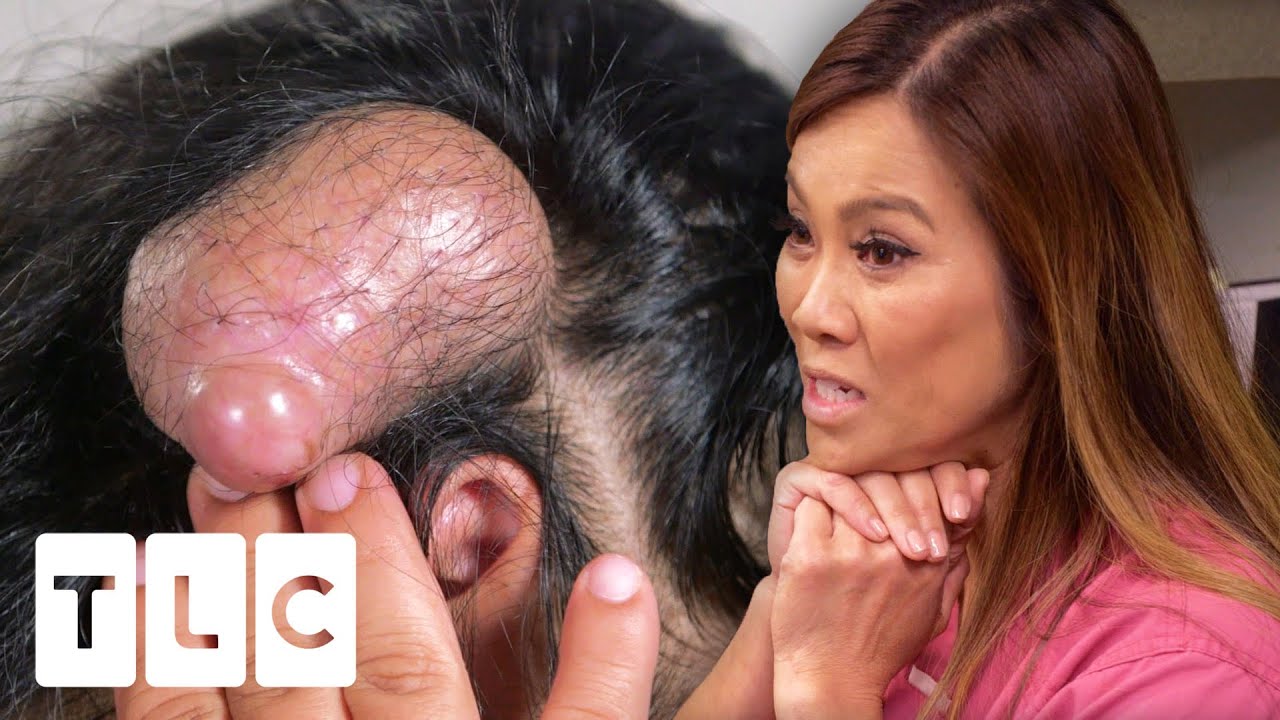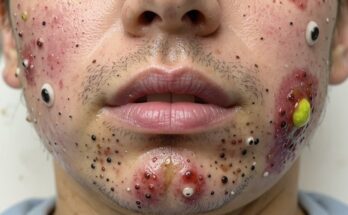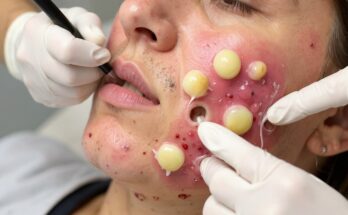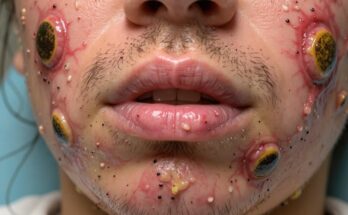Popping pimples may feel satisfying and tempting, especially when a breakout appears right before an important event. But what many people don’t realize is that most pimple-popping attempts cause more harm than good. While it might look like a quick fix in the mirror, improper techniques can lead to infections, scarring, and more breakouts later. Understanding the most common mistakes people make is the first step toward protecting your skin and making smarter decisions for long-term acne health.
1. Popping Pimples Too Early
One of the biggest mistakes people make is popping a pimple before it is ready. When a pimple is deep under the skin without a visible white or yellow head, squeezing it only forces the contents deeper. This causes increased inflammation, redness, and swelling. In many cases, an early pop turns a small bump into a painful cystic lesion.
A pimple is only considered “ready” when the surface is soft, and the white or yellow pus is close to the top layer of skin. Even then, dermatologists still recommend caution. Popping too early guarantees skin trauma and prolongs the healing process.
2. Using Dirty Hands or Nails
Many people underestimate how dirty their hands can be. Touching your face with unwashed hands transfers bacteria, oils, and germs into the pore. Using fingernails—especially long or acrylic nails—causes even more damage. Nails are sharp, and they often carry bacteria underneath, increasing the risk of infection.
This leads to:
-
Greater redness
-
More swelling
-
Potential infection
-
Larger and darker scars later
If you insist on squeezing a pimple (though not recommended), clean hands, sanitized tools, and gentle pressure are essential.
3. Applying Too Much Force
Another common mistake is squeezing too hard or pressing from the wrong angle. Excessive pressure pushes the infection deeper into the skin, causing what dermatologists call a “rupture,” where the pimple bursts under the skin instead of outward.
This leads to:
-
Deep inflammation
-
Painful cysts
-
Longer healing times
-
High risk of scarring
Using too much force is the fastest way to turn a small pimple into a long-lasting skin problem.
4. Popping a Pimple in the “Danger Triangle”
The danger triangle refers to the area between the corners of your mouth and the bridge of your nose. This region contains veins connected to important blood vessels near the brain. Picking or squeezing pimples in this area can potentially allow bacteria to spread deeper into the bloodstream, leading to severe infections.
Although the risk is small, dermatologists strongly advise never popping pimples in this area.
5. Not Preparing the Skin Properly
Many people go straight into squeezing without preparing their skin first. This increases the risk of tearing, bleeding, and inflammation. Proper skin preparation includes:
-
Washing the area with a gentle cleanser
-
Using warm compresses to soften the skin
-
Sterilizing tools and fingers
Skipping these steps makes popping more damaging and painful.
6. Ignoring Aftercare
Once people pop a pimple, they often assume the job is done. But the aftercare process is just as important as the actual extraction. Without proper aftercare, bacteria can re-enter the open pore and create a new breakout in the same spot.
Common aftercare mistakes include:
-
Not cleaning the area
-
Not applying an antibacterial or acne treatment
-
Touching the area again
-
Applying makeup immediately after
Good aftercare includes gentle cleansing, applying spot treatments like benzoyl peroxide or salicylic acid, and avoiding further irritation.
7. Over-Picking and Repeatedly Squeezing
Sometimes a pimple doesn’t come out cleanly the first time, and many people make the mistake of repeatedly squeezing it until the skin becomes raw. This increases the risk of:
-
Bleeding
-
Scabs
-
Hyperpigmentation
-
Permanent scars
Even worse, squeezing repeatedly can cause the pore to break internally, leading to deep nodules that take weeks to heal.
8. Using the Wrong Tools
Some people use cotton swabs, metal extractors, or even household objects like bobby pins or tweezers. Using sharp or dirty items can cause injuries, bruising, and infections. Even professional tools can be harmful when used with too much force or incorrect technique.
Dermatologists train for years to use these tools safely. At-home attempts often cause more harm than benefit.
9. Popping Pimples During Active Breakouts
When the skin is already inflamed and sensitive, picking makes everything worse. Acne-prone skin is easily irritated, and popping one pimple often leads to several new ones. Squeezing can spread bacteria to surrounding pores, creating a chain reaction of breakouts.
If your skin is having an active flare-up, avoid popping altogether and focus on calming treatments instead.
10. Not Understanding When to Seek Professional Help
Some pimples should never be popped at home, especially:
-
Deep cystic acne
-
Painful nodules
-
Blackheads that don’t budge
-
Pimples that keep returning
A dermatologist or licensed esthetician can safely treat these issues using sterile tools and proper techniques. Professional extractions reduce the risk of scarring and often provide faster results.
Final Thoughts
Popping pimples might seem harmless, but it carries several risks—scarring, infections, worsening inflammation, and long-term pigment issues. Most of the problems come from common mistakes: popping too early, using dirty hands, applying too much pressure, or skipping aftercare.
Understanding these mistakes helps you make smarter decisions for your skin. Whenever possible, avoid popping and choose safer alternatives like spot treatments, warm compresses, or professional care. Your skin will thank you in the long run.



